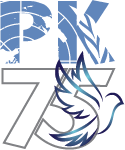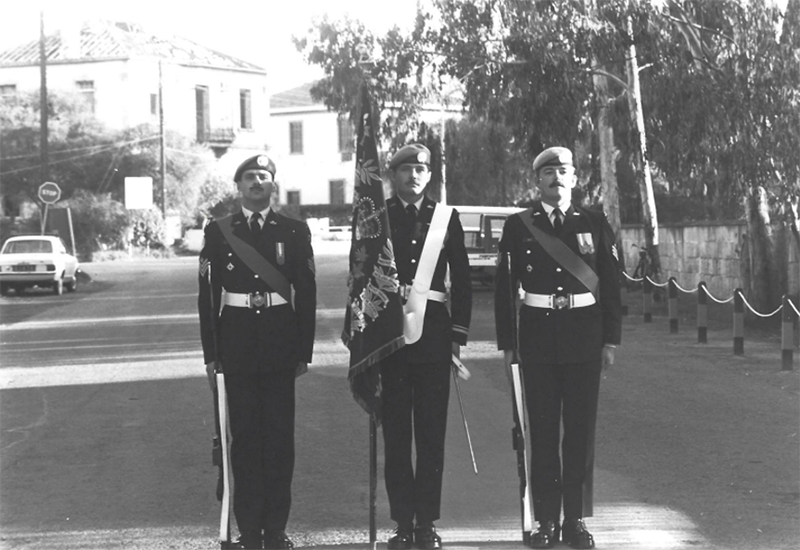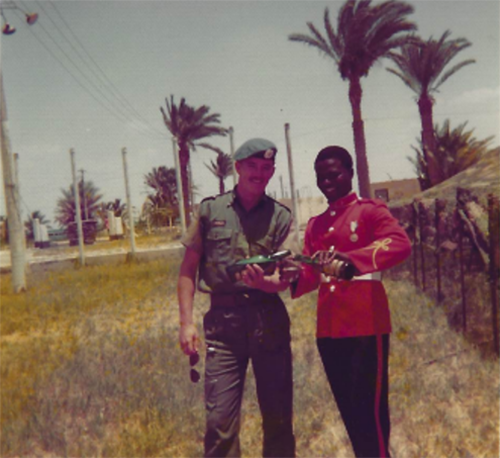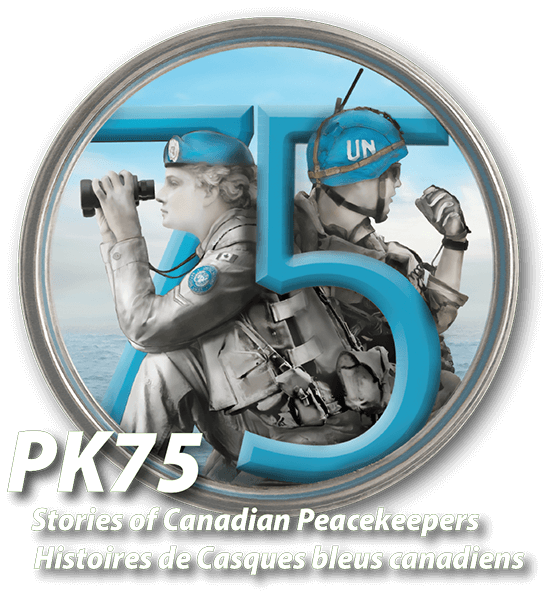


St. John's, NL, Canada
Terrence Hurley
Current Location: Goulds, NL, Canada
It was with both apprehension and excitement I awoke on May 26, 1975, for the start of what would be my first UN Mission to Egypt with the United Nations Emergency Force II (UNEF II). A week in Montréal going through what we call the Sausage Machine (Medical, dental needles, lectures etc. and our first supply of anti-malaria drugs and salt tablets). We departed Montréal on 3 June 1975, destination Cairo.
Although Canada’s role in this mission was one of logistics, there were approximately 20 of us from the 3rd Battalion, The Royal Canadian Regiment (Infanteers) enroute to Egypt. Although we had specific tasks within the scope of the mission, I believe our secondary role was one of security as a “just in case” scenario arose. I remember when the doors of the Plane opened, and we were hit with a wall of heat. One of the pilots said it was 117°F on the tarmac.
We were all glad we were travelling in summer dress order but would have been much more comfortable had we been able to be issued the clothing we were to wear in-country. We had been told they would be issuing us with UN Blue Berets during our week in Montréal, but they told us that they too would be issued in country. Imagine, 20 or more soldiers in Green Berets wearing the 8-point star of the Royal Canadian Regiment, quite similar to the Star of David. To say we caused a commotion was an understatement. With head dress removed, we were escorted to our waiting busses and off to our final destination of Ismailia, Egypt.
We had various jobs while employed there — communicators, dispatch drivers, Regimental Police. Mine was that of a communicator during my tour and I had the pleasure of working with the Ghanaian Battalion, situated on the Suez Canal at Great Bitter Lake. The only drawback to this was we (the four of us) were fed by them, and everything they ate was curry this, or curry that. After two weeks of this I arranged for our own food to be delivered. The camp we stayed at was rat infested. Combined with the snakes, scorpions, spiders etc., we slept with one eye open. Although we had no serious injuries during our tour, we had some people returned to Canada due to what we called the “Gypo Gut” an intestinal bug. One friend lost 60 pounds in 3 weeks.
It is hard to describe a six-month tour in a short paragraph, but bottom line is it was a memorable one. I must add one incident which took place in Cairo. We were visiting the largest of the great Pyramids of Giza, built for the Pharoah Khufu. Once entering, I decided I wanted a picture laying in the Pharaoh’s Sarcophagus. It did not go well, and I was almost arrested. A few $5.00 US bills and a couple packs of cigarettes resolved the problem. I got my picture though. I returned home to Canada in December 1975 for a much-needed vacation.
It wasn’t eight months later, from October 1976 to April 1977, that I deployed on my second peacekeeping tour with the United Nations, this time to Cyprus. Our mission was to patrol and observe the Greenline between the Turkish and Greek Forces. The tour was uneventful other than the sporadic shots being fired by one or the other side trying to provoke an incident. On posting to Second Battalion, The Royal Canadian Regiment in 1978, I was once again on the ground about six months when I was off to Egypt for a double tour this time, March to October 1979. I was part of the second last group to leave before the mission ended entirely.
In 1983 and 1991, I deployed again to Cyprus. The 1991 tour was interesting because it was the first time an entire company of Reserves deployed with us. There were only six Regular Force members attached to them. There were a few growing pains but all in all they all performed admirably. A little over a year later I (with 2RCR) deployed to Bosnia in what would be my final United Nations Tour as a member of the Regular Force. With the Reserves, I later completed a UN tour of duty in December 2006 in Sierra Leone, West Africa.
To sum up, I wouldn’t change a thing that I’ve been part of. Although it was stressful at times and many hardships were overcome, to be part of an organization which was there to HELP countries and the people was awesome.
Biography
Chief Warrant Officer Hurley was born in St. John’s NL on November 21, 1952, to the late Arthur and Catherine Hurley. He is the middle of 15 brothers and sisters of which there are nine brothers and six sisters. He attended Holy Cross School up to grade 9 and then proceeded to Gonzaga High School when Holy Cross was destroyed by fire. He left school at the completion of grade 10 to join the military.
Chief Warrant Officer Hurley joined the Canadian Forces on 2 February 1971. After successfully completing Recruit Training at Canadian Forces Recruit School Cornwallis, NS, he proceeded to Canadian Forces Base (CFB) Gagetown, NB, for his trades training, that of an Infantryman. He was posted to 3rd Battalion, The Royal Canadian Regiment at CFB Petawawa, ON, in November 1971. In November 1975, he was promoted to Corporal. While serving with this unit, he completed tours of duty in Cyprus and Egypt. As well, he was part of the Ace Mobile Force (Land) and partook in several exercises in Norway, during the Cold War.
In 1978 he was posted to 2nd Battalion The Royal Canadian Regiment at CFB Gagetown, NB. In April of 1980, he was promoted to the rank Master Corporal, and during the next six years with this unit, he served on two more tours of duty to Egypt, and another one to Cyprus. In April 1983, he was promoted to the rank of Sergeant. He participated in every major exercise the Army ran during these years including an exchange program where he underwent training with the Second/Thirty Forth (2/34) Infantry Division in Fort Stewart, Georgia, USA.
In 1984, he was once again posted to CFB Petawawa to the Regimental Battle School, where for the next two years he trained new recruits. In 1986 he was posted to CFB Winnipeg, again with 3rd Battalion, The Royal Canadian Regiment, where he was selected to head up the “Pipes and Drums” of the Regimental Band in the prestigious position of Drum Major. The year 1988 saw him posted to a four-year tour of duty in Baden-Baden, West Germany, during which he was promoted Warrant Officer in 1990. He participated in all the major European NATO exercises during this time. Unfortunately, his tour was cut short due to the OKA Crisis, and the need for his past experiences, and he was posted back to 2nd Battalion, The Royal Canadian Regiment, CFB Gagetown, NB. After the OKA situation was resolved, he once again served another tour of duty in Cyprus and one in the former Republic of Yugoslavia.
In 1993, he was posted to CFB Halifax, NS, to a Reserve unit as their Training Warrant Officer. It was here he met his future wife Roxanne, who was also serving in the Military. He remained there until a position became available in his hometown of St. John’s, where he and Roxanne moved in April 2000. He assumed the Training Warrant Officer’s position for the First Battalion Royal Newfoundland Regiment until his retirement from the Regular Force in April 2004, at which point he had completed 33 years of service. He immediately switched over to the Reserve Force with the First Battalion Royal Newfoundland Regiment. Chief Warrant Officer Hurley was promoted in his present rank in December 2008, and assumed the duties of the Regimental Sergeant Major of the 1st Battalion Royal Newfoundland Regiment.
Chief Warrant Officer Hurley completed his most recent UN tour of duty in December 2006 in Sierra Leone, West Africa. He retired from the Reserves in November 2012 and transferred to the Cadet Organizations Administration and Training Service. He was awarded the Chief of Defence Staff Commendation from General Hillier. Both he and his wife Roxanne also received the Chief of Defence Staff’s Coin, a personal memento from General Hillier for their dedicated service. His greatest honour was when he was chosen to be the model for a statue of a Royal Newfoundland Soldier at the Conception Bay South Monument of Honour.
Chief Warrant Officer Hurley and his wife Roxanne, who is also retired from the military, enjoy gardening, golfing and snowshoeing in the winter and currently reside in Goulds, NL. Both children are grown and moved away from home, with one in British Columbia and the other in New Brunswick.

Sergeant Terrence Hurley (right) as a member of the Regimental Colour Guard, Nicosia, Cyprus, 1978. Sergeant Danny Dupuis is on the left, and Lieutenant Don Haisell bears the Colour in the centre.



